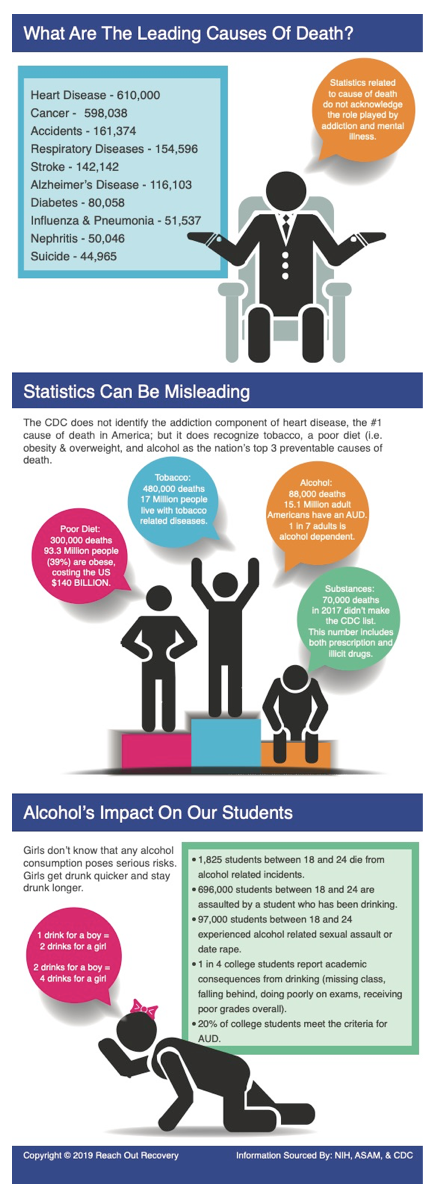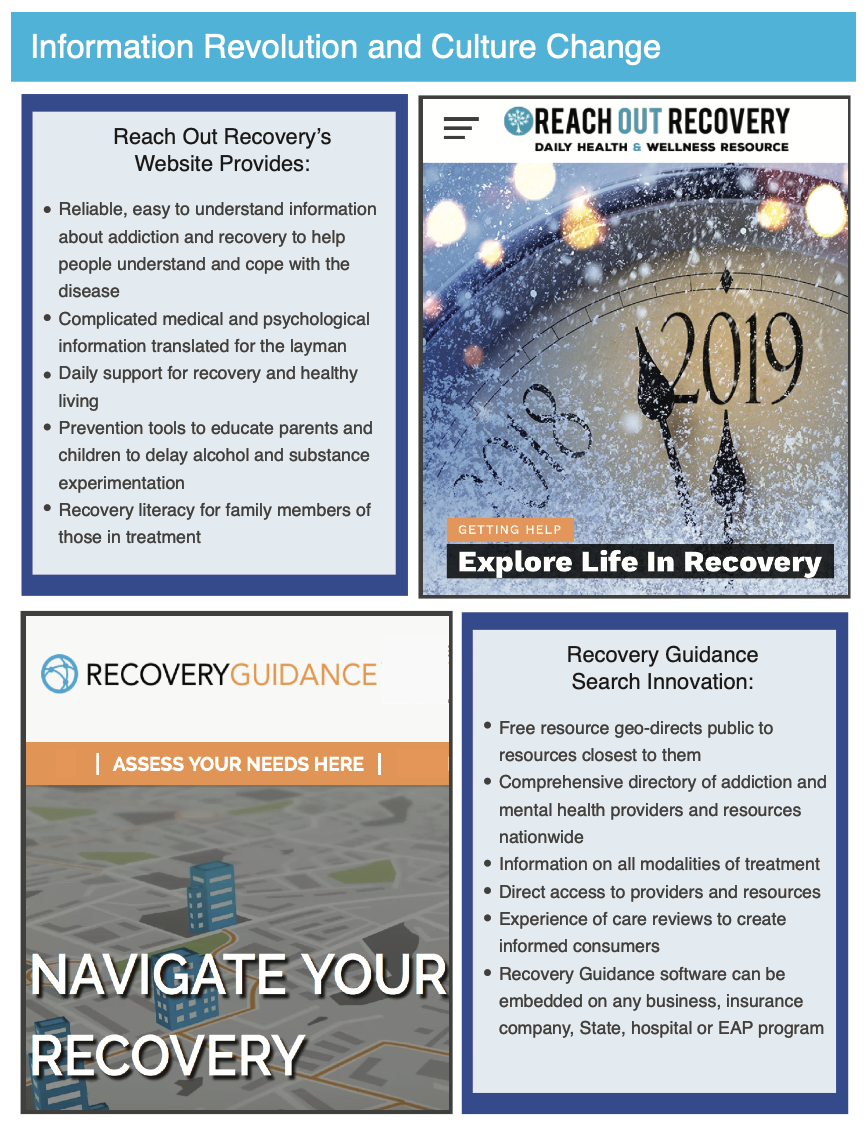Addiction related diseases and deaths are the number one health issue in America, but few families coping with it have the information and tools they need to help their loved ones and themselves. Without education, prevention tools, and access to effective treatment, the nation is unable to cope. The destructive impact of addiction includes: increased obesity, tobacco, alcohol, and substance use, higher costs to society, and inevitable epidemics. We cannot look to government institutions to solve what is fundamentally a commerce driven health crisis. As business interests fuel all our addictions, only business interests affected by the cost of addiction can provide the vision and system busting innovation needed to provide solutions.
Addiction Is Driven by Commerce
There is nothing new about substance addictions. Man’s love affair with intoxicants has been the driving force of developing civilizations for thousands of years.1 Intoxicants include alcohol; tobacco; sugar; caffeine products like tea, coffee, and chocolate; opium; heroin; cannabis; cocaine; and other natural substances, and they are all addictive. What has changed over time is delivery systems, sophistication of production, and availability. In the 16th century, the invention of the opium pipe and the distillation of alcohol opened the pathway for those substances to evolve from medicinal use to popular use. The same occurred with the invention of the syringe in 1853,2 which launched widespread use of morphine. Heroin was synthesized in 1874 in London, produced by Bayer in Germany in 1898,3 and sold over the counter in the U.S. along with aspirin. Cocaine was first added to wine to promote “vigor and health.” After prohibition halted wine production, cocaine was added to Coca Cola.4
The Pure Food and Drug Law was passed in 1906,5 followed by the Opium Exclusion Act in 1909 banning the smoking of Opium, but not the manufacture or regulation of opium in medicines. Prohibition in 1920 and more stringent drug laws to regulate opium, heroin, cocaine, and cannabis were put in place in the 1920’s.6 The laws did not end drug use. They served to divert drug development and distribution from the streets to pharmaceutical companies, later overseen by the FDA. Hundreds of ever more potent and addictive drugs have been developed, approved for use, and distributed both legally and illegally. At the same time the illegal drug trade also grew exponentially. The billions of dollars spent on prohibition, and later the war on drugs, have not deterred drug cartels. The FDA still approves dangerous addictive prescription medicines. Further, slogans and scare tactics have not slowed teen use. Let’s not forget the tobacco, alcohol, and food industries, which continue to develop thousands of pleasure-producing, addictive products for millions of people who have no ability to resist. The appetite for intoxicants is never going away, so education, prevention, and treatment are the only solutions.

Statistics Can Be Misleading
According to the CDC, the number one cause of death in America is Heart Disease at 610,000 deaths a year, one in four. Two causes of heart disease are obesity and tobacco; both are addictions. The CDC does not measure the addiction component to this disease. The cause of death may be heart disease, but the cause of heart disease is not identified. Stigma related to addiction creates a distinction between substance users and food users, for example, since food is not considered a drug. Yet we know sugary, salty, fatty foods are highly addictive. They are ubiquitous and they have changed the way our culture eats. Most important, they are a big part of the addiction picture.
The opioid crisis, while tragic and continuing, has diverted attention and funding from a much larger addiction epidemic. Substance, Alcohol and Behavior Use disorders (SUD, AUD, BUD) affect nearly every American family. The combined death rate from the CDC’s top three preventable causes of death is 868,000 people a year. Deaths, illnesses, criminal justice, and hospital costs, as well as the loss of productivity related to addiction cost the nation a trillion dollars a year.7
Education Is Lacking
The Surgeon General’s report on Addiction (2016)8 called for changes relating to the opioid crisis and addressed the need for education, prevention, and access to treatment. Only one in nine people who need treatment receives it. The CDC estimates that of the 20 million people suffering from SUDs, 17.7 million people are not receiving treatment. Families are helpless and hopeless to cope on their own. This neglect would not be the case with any physical disease.
Substance, Alcohol, and Behavior Use Disorders are defined by the American Society of Addiction Medicine (ASAM) as:
“Addiction is a primary, chronic disease of brain reward, motivation, memory, and related circuitry.”
The medical, insurance, and addiction treatment fields are slow to accept that SUD’s AUDs and BUDs are physical illnesses with a mental illness component. Many cases are as persistent as cancer and diabetes, and they must be treated with the same kind of diligence and ongoing management. Recovery requires not months, but years, of management and treatment. The cost of education, prevention, and treatment is far less than the cost of inertia. While more is known about addiction and recovery, an information gap continues to exist between treatment providers, academics, government institutions, and the public.
According to the Substance Abuse Mental Health Services Administration (SAMHSA):
“The Mental Health Parity and Addiction Equity Act of 2008 requires insurance groups offering coverage for mental health or substance use disorders to make these benefits comparable to general medical coverage. Deductibles, copays, out-of-pocket maximums, treatment limitations, etc., for mental health or substance use disorders must be no more restrictive than the same requirements or benefits offered for other medical care.”
This law has yet to be widely implemented by insurance companies, and the public doesn’t know how to fight for the coverage mandated by law.
The Comprehensive Addiction and Recovery Act (CARA) 2016 provides for prevention and education but that component hasn’t been funded.9 In addition, engaging prevention programs for children and teens haven’t been developed. The 120 million Americans directly impacted by substance addiction (and the even greater number impacted by food addiction) need to be educated the same way they are educated about other chronic, progressive, relapsing diseases.
Author’s Personal Experience Inspires Solution
I was a successful crime novelist, Trustee of the New York Police Foundation, and Public Member of The Middle States Commission of Higher Education when my own family was impacted by addiction. My interest in fiction had also inspired research projects at John Jay College of Criminal Justice and at NYU Law School. Like most Americans, I knew little about addiction until my own children’s experimentation with alcohol and substances in their teen years forever changed my life and my purpose. Our family’s recovery journey required more than 30 treatment providers in five states to achieve a ten-year remission from the disease. My family stumbled along for two decades, slowly advancing from dysfunctional to functional, haphazardly finding help. Because there was no patient education or easy access to treatment, our story could easily have ended tragically as it still does for millions of Americans.

Education and Access to Treatment
As a writer, I challenged myself to find new ways to provide the education needed by the underserved 120 million people directly impacted by addiction. In 2011, the nonprofit organization, Reach Out Recovery (ROR) was founded. ROR is a free, comprehensive information platform that engages and educates a diffuse audience. ROR empowers and inspires people in crisis and in recovery without shaming them. Stereotypes, frightening language, and disturbing images of addiction too often serve as roadblocks to recovery readiness and long-term remission. ROR uses recovery literacy techniques derived from the latest science and psychology research as well as a 12-step philosophy to help all family members cope with this persistent disease. Visitors of all ages learn at their own pace, returning many times for continued support. In 2017-2018, visitors to the site topped five million.
When ready to take action, ROR’s readers can easily find the treatment they need on Recovery Guidance, (RG) a nationwide, comprehensive directory of providers and resources. An early meeting with Google when RG was in development showed us that more than 750,000 people were daily searching the Internet to locate treatment. The result was that vulnerable families in crisis were directed to referral sites or facilities with high advertising budgets and could not find affordable treatment close to them. In addition, no unbiased consumer experience of care reviews was available for them. Search innovation was needed to empower people to research addiction and mental health treatment options the same way they explore all other products and services on the Internet. Recovery Guidance is a directory of all types of addiction and mental health treatment providers and resources nationwide. Physicians, counselors, recovery programs, and treatment facilities have equal exposure. Recovery Guidance can be defined as the Yelp or Healthgrades of Recovery. RG is free to the public and a subscription site for providers. Providers have direct access to consumers and no additional referral fees. The goal of Recovery Guidance is to create informed addiction and mental health consumers who can return to the site many times as their need for services change.
Conclusion
Inertia and destructive conditioning have taken place over centuries of increasing intoxicant use. As a nation we have gotten used to careening from addiction crisis to crisis. The need for comprehensive education, prevention tools, and access to effective treatment are critical. Short-term funding to the combat the latest crisis pushes solution further down the road. Only innovative businesses with a passion for doing good can begin to solve a true national emergency.
Author bio
Leslie Glass, BA Sarah Lawrence College, is an award-winning journalist, filmmaker, and novelist. She is the founder of Reach Out Recovery and creator of Recovery Guidance, two innovative addiction and recovery websites. Recovery Guidance is a recipient of the 2019 Social Venture Award from the Social Innovations Journal. Glass also received the 2016 American Society of Addiction Medicine (ASAM) Media Award for her documentary The Secret World of Recovery. Glass’s documentary The Silent Majority was distributed by American Public Television to all PBS stations in 2015. Glass is the USA Today and NY Times bestselling author of 13 novels including nine NYPD crime novels. She has also served as Trustee of the New York City Police Foundation and as Public Member of the Middle States Commission of Higher Education.
For more information about Reach Out Recovery visit https://reachoutrecovery.com/. The author, Leslie Glass, can be contacted by email at This email address is being protected from spambots. You need JavaScript enabled to view it..
Works Cited
7 Top ten leading cause of death
10 Historical and cultural aspects of man’s relationship with addictive drugs. Dialogues of Neuroscience


